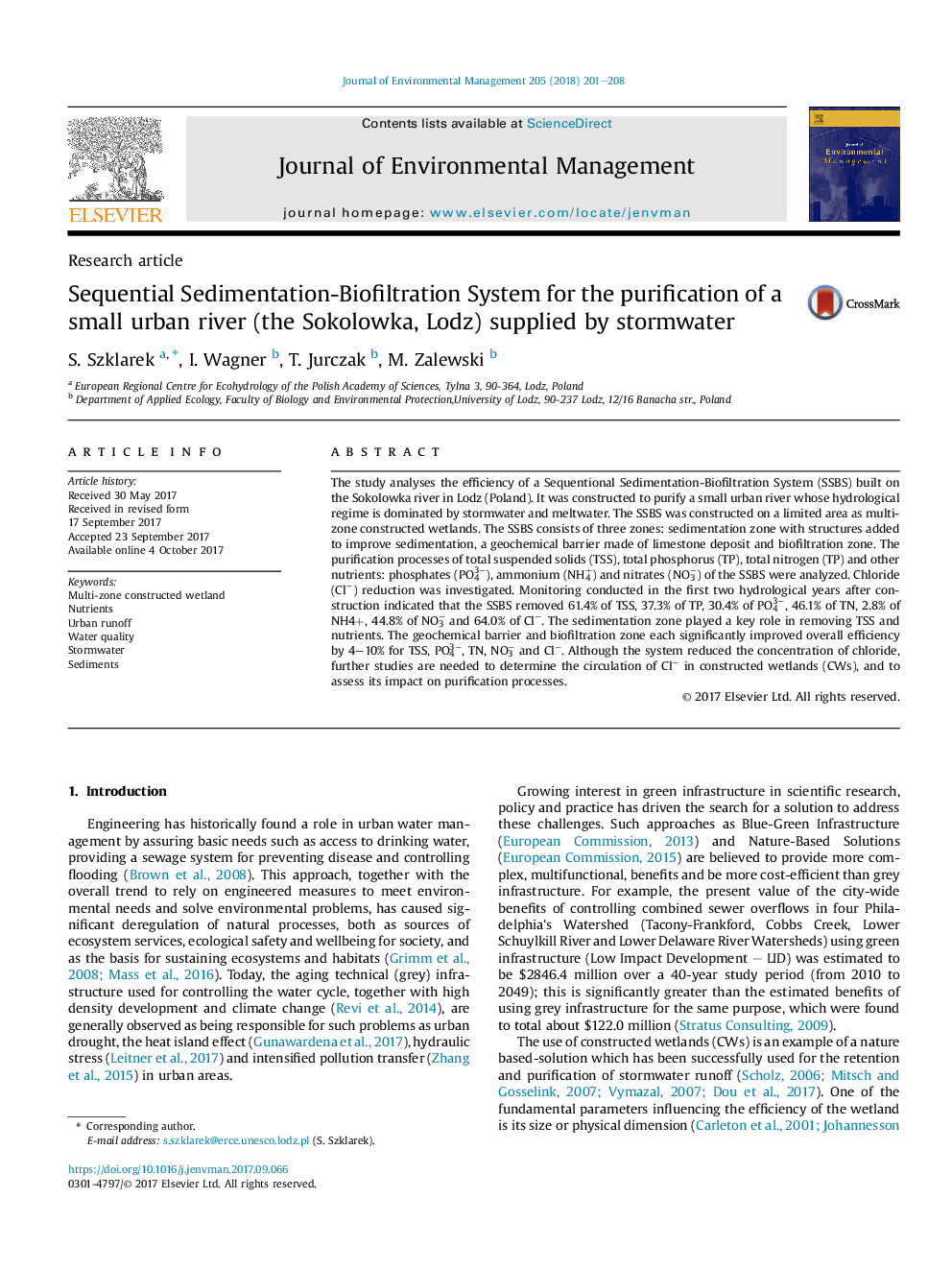| کد مقاله | کد نشریه | سال انتشار | مقاله انگلیسی | نسخه تمام متن |
|---|---|---|---|---|
| 5116222 | 1485213 | 2018 | 8 صفحه PDF | دانلود رایگان |
- A multi-zone constructed wetland was studied for small urban river purification.
- System provide reduction despite small system area compared to its watershed.
- Average removal efficiencies 61.4% (TSS), 37.3% (TP), 46.1% (TN) and 44.8% (NO3â).
- Sedimentation zone played key role in overall removal efficiency.
- Investigated system reduces chloride pollution - 64%.
The study analyses the efficiency of a Sequentional Sedimentation-Biofiltration System (SSBS) built on the Sokolowka river in Lodz (Poland). It was constructed to purify a small urban river whose hydrological regime is dominated by stormwater and meltwater. The SSBS was constructed on a limited area as multi-zone constructed wetlands. The SSBS consists of three zones: sedimentation zone with structures added to improve sedimentation, a geochemical barrier made of limestone deposit and biofiltration zone. The purification processes of total suspended solids (TSS), total phosphorus (TP), total nitrogen (TP) and other nutrients: phosphates (PO43â), ammonium (NH4+) and nitrates (NO3â) of the SSBS were analyzed. Chloride (Clâ) reduction was investigated. Monitoring conducted in the first two hydrological years after construction indicated that the SSBS removed 61.4% of TSS, 37.3% of TP, 30.4% of PO43â, 46.1% of TN, 2.8% of NH4+, 44.8% of NO3â and 64.0% of Clâ. The sedimentation zone played a key role in removing TSS and nutrients. The geochemical barrier and biofiltration zone each significantly improved overall efficiency by 4-10% for TSS, PO43â, TN, NO3â and Clâ. Although the system reduced the concentration of chloride, further studies are needed to determine the circulation of Clâ in constructed wetlands (CWs), and to assess its impact on purification processes.
Journal: Journal of Environmental Management - Volume 205, 1 January 2018, Pages 201-208
